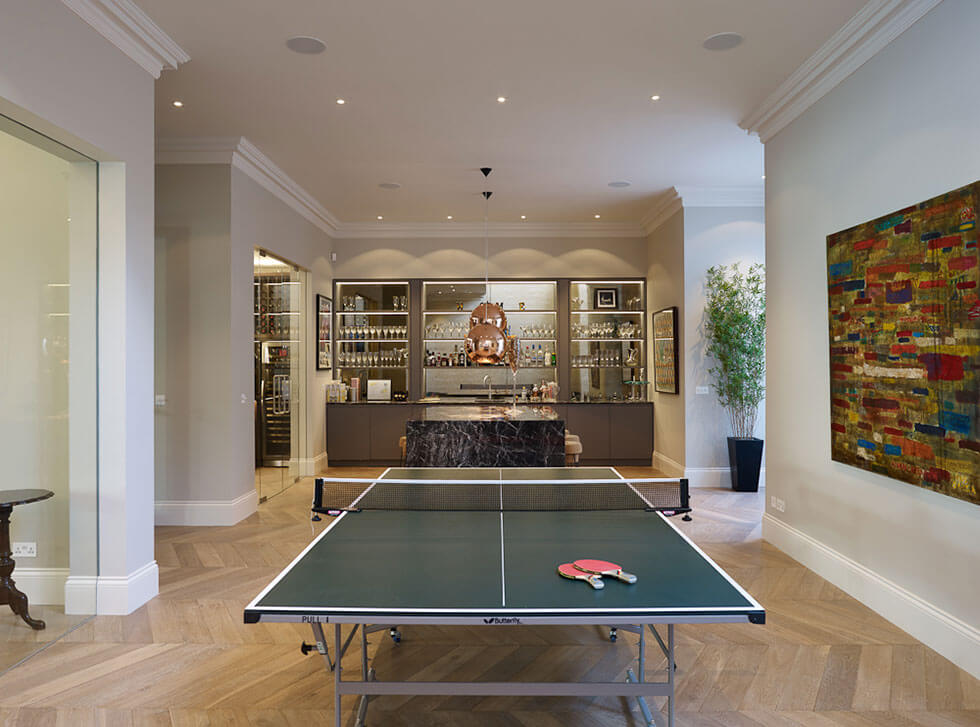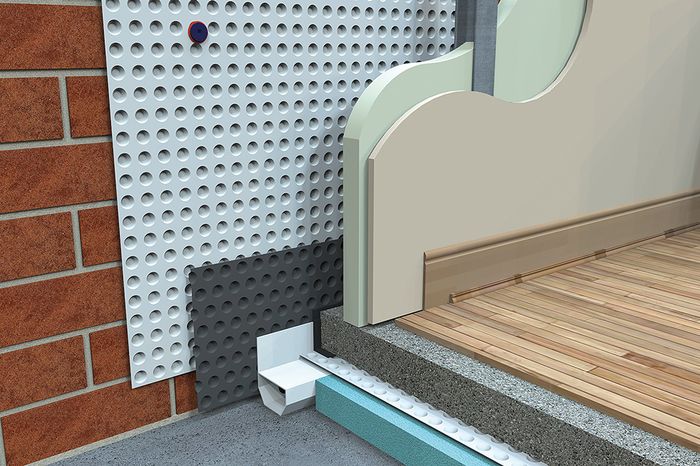Hi, looking for some advice / people with experience.
Sandstone house built in 1900, built on a slope. One side of the house has a kind of basement floor, where I would say around half of it is below ground level.
Been getting signs of damp in the walls and floors. Had a company do a damp survey, which they said the room needs tanked. To save money he said I could do a lot of the prep work myself and said I'd need to strip the walls back to bare stone, so they can then apply a render called Sulfacrete then two coats of something called Hydradry.
I've taken all the plaster off which revealed a type of render already on the stone. Parts of the render had big holes in it for electrical sockets and wiring, which also revealed the stonework. Some parts of render was cracked and fell away from the stone.
Damp guy came back and said they won't need to apply a render anymore as he didn't know what was behind the wall when he first did the survey, and the render I have will do - he said it was a cement render. He said they will just fill in any cracks and holes.
So - my concerns...
The best way to describe the stonework is it just looks like a mixture of random sized stones / rubble. It doesn't look like sandstone, nothing how it looks on the outside. It doesn't look like there is much mortar between the stones either, and where there is mortar it's very crumbly.
Should I be concerned at how it looks?
I'm worried that the existing render is actually the wrong type, possibly causing more damage. Is this a sign of moisture / water being trapped between the walls?
How do I know what type of render it really is, but what type of render should I have on the wall?
I've read lime to make it breathe, however won't this actually be bad if I'm trying to damp proof it? Or in other words if a cement render is used to completely damp proof the basement won't the water get trapped behind it and damage the stone?
Thanks in advance
Sandstone house built in 1900, built on a slope. One side of the house has a kind of basement floor, where I would say around half of it is below ground level.
Been getting signs of damp in the walls and floors. Had a company do a damp survey, which they said the room needs tanked. To save money he said I could do a lot of the prep work myself and said I'd need to strip the walls back to bare stone, so they can then apply a render called Sulfacrete then two coats of something called Hydradry.
I've taken all the plaster off which revealed a type of render already on the stone. Parts of the render had big holes in it for electrical sockets and wiring, which also revealed the stonework. Some parts of render was cracked and fell away from the stone.
Damp guy came back and said they won't need to apply a render anymore as he didn't know what was behind the wall when he first did the survey, and the render I have will do - he said it was a cement render. He said they will just fill in any cracks and holes.
So - my concerns...
The best way to describe the stonework is it just looks like a mixture of random sized stones / rubble. It doesn't look like sandstone, nothing how it looks on the outside. It doesn't look like there is much mortar between the stones either, and where there is mortar it's very crumbly.
Should I be concerned at how it looks?
I'm worried that the existing render is actually the wrong type, possibly causing more damage. Is this a sign of moisture / water being trapped between the walls?
How do I know what type of render it really is, but what type of render should I have on the wall?
I've read lime to make it breathe, however won't this actually be bad if I'm trying to damp proof it? Or in other words if a cement render is used to completely damp proof the basement won't the water get trapped behind it and damage the stone?
Thanks in advance



